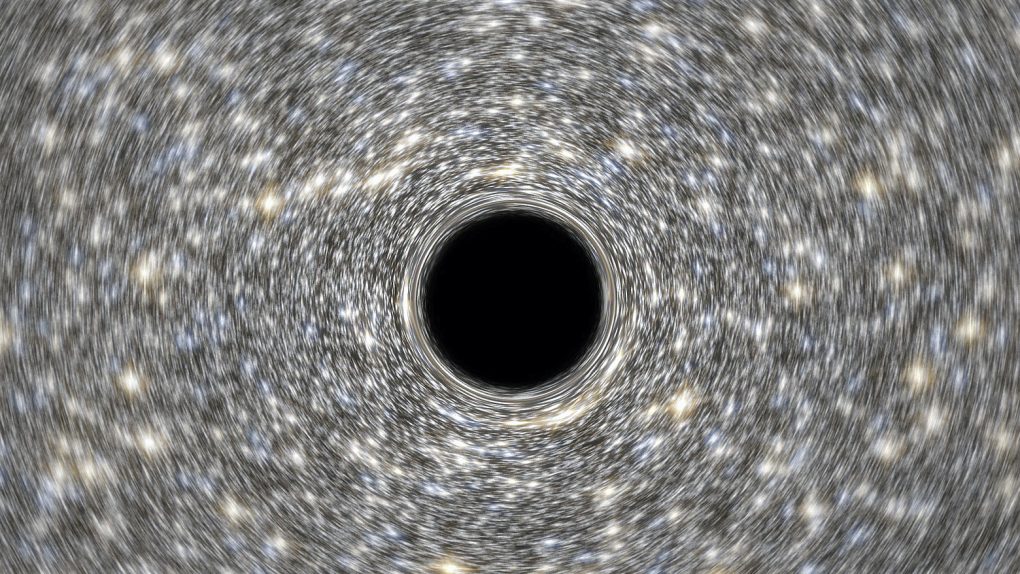Scientists have known for a while that big and small black holes exist. The largest, supermassive black holes, lurk at the center of galaxies, while small black holes result from the collapse of huge stars. But if there’s big black holes and small black holes, there’s got to be something in between, right? Researchers have long assumed so, but lacked much in the way of evidence. Now, a team led by Tomoharu Oka of Keio University in Japan believes it has found some solid data to back up a theory that a mid-sized black hole is actually hanging out in our own home galaxy.
The research, which was published in Nature, was prompted by observations made with the 45-meter Nobeyama radio telescope in Japan. The researchers spotted what appeared to be a huge cloud of gas behaving oddly in the interior of the Milky Way. Areas of the gas were moving extremely fast, and it hinted that an extremely massive object was nearby. The team then enlisted the help of the Atacama Large Millimeter Array, which helped add detail to their previous observations.
Advanced computer models of the gas cloud further flesh out the hypothesis that an intermediate-sized black hole is residing close to the center of our galaxy. Radio waves similar but fainter than those believed to be produced by the supermassive black hole seated in the center of the Milky Way were also detected coming from the spot where the massive object is thought to be, further supporting the theory.
But if there really is a large (but not supermassive) black hole hiding in our galaxy, it must have come from somewhere. Finding out where it originated is much more difficult, but the team believes it could have been the core of a dwarf galaxy that the Milky Way swallowed at some point in its history. This “galaxy cannibalism” would help explain the growth of large galaxies, though it would need to be supporter through further research.








